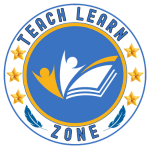Table of Contents:
Are you an educator looking to enrich your teaching strategies and create more engaging lesson plans? Incorporating Bloom’s Taxonomy into your teaching approach can help you achieve this goal. In this comprehensive guide, we will take you through a step-by-step approach to craft lesson plans that align with the various cognitive levels of Bloom’s Taxonomy. By the end of this journey, you’ll be equipped with the tools and insights to captivate your students’ minds and promote deeper learning.
“Empowering Minds, One Tool at a Time: Unleash Learning Potential with Quality School Supplies.”

Understanding Bloom’s Taxonomy
Bloom’s Taxonomy is a renowned educational framework that classifies cognitive skills into six distinct levels. These levels, from the simplest to the most complex, are Remembering, Understanding, Applying, Analyzing, Evaluating, and Creating. Each level represents a different facet of cognitive development and thinking, making it an invaluable tool for educators to tailor their lesson plans.
“Navigating Inspiration, Guiding Excellence: Elevate Education with the Teacher’s Planner.”

Setting Clear Learning Objectives
The foundation of any effective lesson plan lies in its learning objectives. Begin by setting clear and concise objectives that articulate what you intend your students to achieve. Ensure that these objectives are aligned with the desired cognitive level of Bloom’s Taxonomy. Use action verbs such as “define,” “compare,” “analyze,” and “synthesize” to specify the level of thinking you aim to evoke.

Choosing Activities for Each Level
To bring your lesson plan to life, carefully select activities that resonate with the cognitive levels you’re targeting. For instance, if your goal is to enhance “Analyzing” skills, consider incorporating activities that require students to break down complex concepts into their component parts. As you progress through the taxonomy, tailor activities to match the cognitive complexity you’re striving for.

Incorporating Diverse Resources
Catering to diverse learning styles is paramount in creating engaging lesson plans. Integrate a wide range of resources, including videos, articles, interactive simulations, and hands-on experiences. This approach ensures that students with different learning preferences can access the content in ways that resonate with them.
The Art of Effective Lesson Planning: 10 Strategies for Engaging Learning

Encouraging Critical Thinking
A hallmark of Bloom’s Taxonomy is its emphasis on critical thinking. Elevate your lesson plan by posing open-ended questions that prompt students to analyze, evaluate, and synthesize information. Encourage them to explore multiple perspectives and defend their viewpoints with evidence.
In the realm of education, critical thinking stands as a cornerstone skill, guiding students toward deeper comprehension, analytical reasoning, and effective problem-solving. The integration of Bloom’s Taxonomy within the framework of critical thinking serves as a powerful tool to nurture these cognitive abilities. By aligning the levels of Bloom’s Taxonomy with instructional strategies that stimulate critical thought, educators can empower students to not only grasp content but also engage with it on a profound level.
Bloom’s Taxonomy as a Blueprint:
Bloom’s Taxonomy, with its hierarchical structure of cognitive levels, offers a clear roadmap for educators seeking to foster critical thinking. The taxonomy begins with lower-order cognitive skills such as remembering and understanding, gradually ascending to higher-order skills like analyzing, evaluating, and creating. This progression mirrors the development of critical thinking abilities.

Fostering Collaboration and Interaction
Learning is enhanced through collaboration and interaction. Integrate activities that foster teamwork, communication, and peer learning. Group projects, debates, and peer assessments not only promote active engagement but also enhance essential interpersonal skills.
In the ever-evolving landscape of education, fostering collaboration and interaction within the classroom environment has taken on a pivotal role. The traditional model of education, where information flows primarily from the teacher to the students, is being complemented and, in many cases, replaced by a more dynamic and participatory approach. This shift is driven by the recognition that cooperative engagement not only promotes a deeper understanding of subject matter but also equips students with essential skills for the modern world.
“Equipping Educators, Inspiring Futures: Unleash Possibilities with Classroom Teacher Supplies.”

Assessing Learning Outcomes
Assessment is a crucial aspect of effective lesson planning. Develop assessments that align with your learning objectives and the cognitive levels you’re targeting. Mix formative assessments, which provide ongoing feedback, with summative assessments that evaluate overall comprehension.

Reflecting and Iterating
After delivering your lesson plan, take time to reflect on its efficacy. Gather feedback from students and observe their engagement levels. Use this information to refine and enhance your lesson plan for future iterations.
Creating engaging lesson plans with Bloom’s Taxonomy requires dedication and a strategic approach. By understanding the taxonomy’s levels, setting clear objectives, diversifying activities, fostering critical thinking, and promoting collaboration, you can empower your students to reach higher levels of cognitive development. Your efforts will not only make learning more enjoyable but also contribute to meaningful educational experiences. Embrace the power of Bloom’s Taxonomy and embark on a journey of enriching education for your students.

Read More Articles
Interactive Learning Games 2023 : Engaging Education Through Play
Mastering Success Proven Teaching Strategies For Effective Learning
Understanding the Department of Education: Shaping Crucial Learning Landscapes
Mastering the Art of Active Learning Strategies for Optimal Educational Gains
Creating Engaging Lesson Plans with Bloom’s Taxonomy: A Step-by-Step Approach
The Art of Effective Lesson Planning: 10 Strategies for Engaging Learning
5 Effective Strategies for Differentiated Instruction: Catering to Every Student
Unlocking The Benefits Of Asynchronous Classes A Comprehensive Guide for Online Learners 2023
